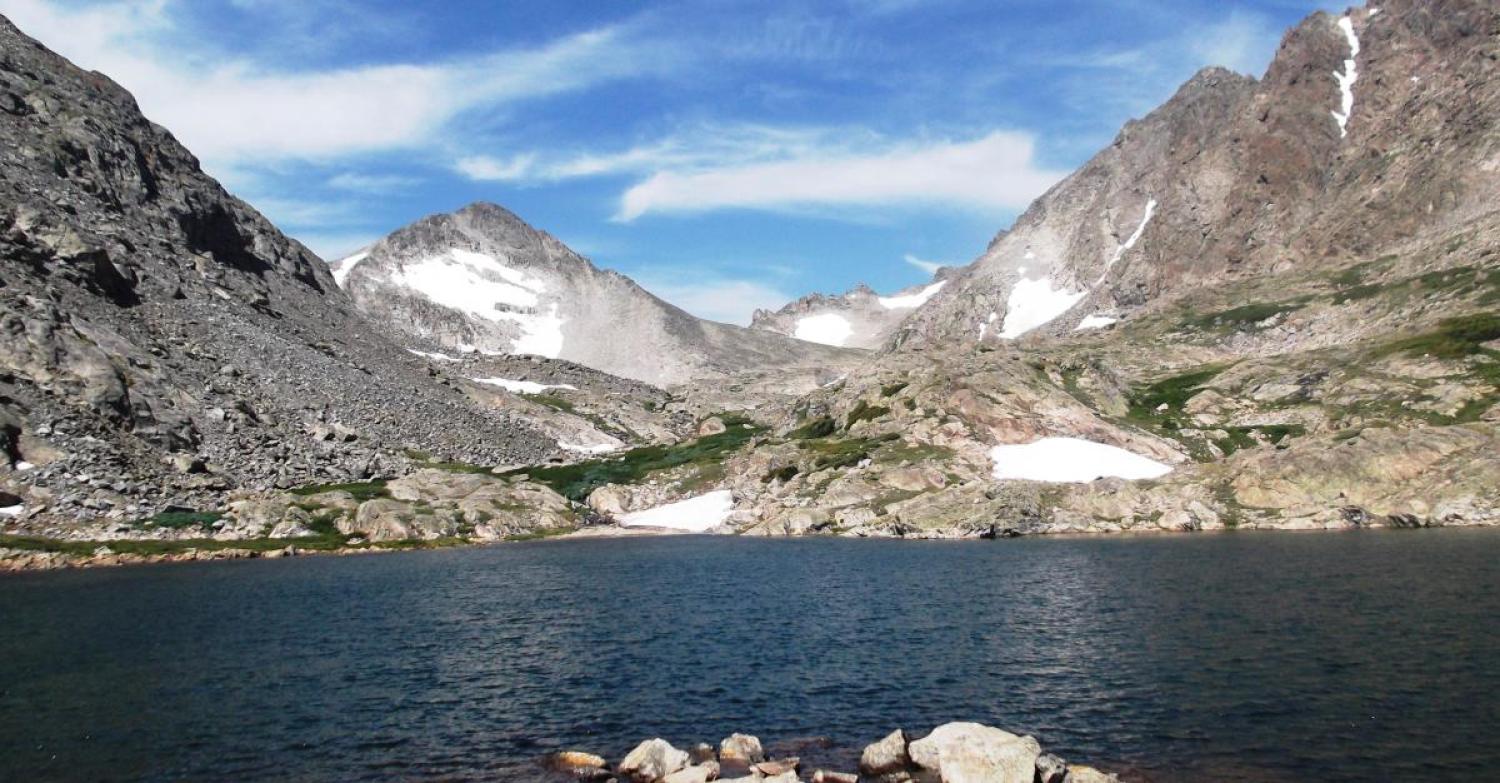Threats to Alpine Lake Ecosystems

High-elevation aquatic ecosystems are among the most vulnerable to climate change and other forms of disturbance, yet few long-term records offer sufficient resolution to characterize shifts in ecosystem structure and their underlying mechanisms. We are part of the Niwot Ridge Long-Term Ecological Research program managed by the University of Colorado, which includes one of the longest-running sampling efforts of alpine aquatic systems. The Green Lakes Valley is a 2.3 km2 catchment, named for a series of paternoster lakes that contribute drinking water for the City of Boulder, includes lakes ranging in elevation from 3216 m (Silver Lake) to 3620 m (Green Lake 5). Green Lake 4 (GL4) in particular, which is the second highest lake in the valley, has been extensively monitored for nearly three decades (http://niwot.colorado.edu).
The Project
Our long-term goal is to better understand where and when climate change leads to ecological changes with an emphasis on identifying the mechanisms underlying such changes. Using long-term data from the Green Lakes, we recently found that spring ice-off dates have shifted seven days earlier over the last 33 years. Based on local climate data, this shift in the timing of ice-off appears to be jointly controlled by spring air temperatures and precipitation, with reductions in spring snowfall having an especially strong effect in accelerating ice cover loss. Perhaps most importantly, earlier ice-off has been associated with substantial changes in the lake ecosystem structure and function, which include increases in water residence time, warmer surface temperatures, stronger thermal stratification, and higher concentrations of most major ions. These structural shifts likely stem from the effects of climate on hydrology: lower spring snowfall and warmer temperatures lead to a reduction in summer stream flow (increasing lake residence times) but an increase in the melting of glacial and permafrost ice (increasing lake solute inputs).
Currently we are working to extend these hydrological and chemical changes to understand how ongoing climate shifts influence biological responses, including the strength of interactions between phytoplankton and zooplankton. Upward movement in the distribution of terrestrial vegetation also has strong potential to influence aquatic systems through inputs of dissolved organic matter, which can affect UVB penetration, primary production, and oxygen availability. We are pursuing these research goals through integration of long-term data analysis, comparative sampling of lakes across an elevational gradient, and experimental manipulations.
Project publications
Loria K.A., McKnight D., Ragar D.M., and P.T.J. Johnson. (2020) The Life Aquatic in High Relief: How elevation dictates the physical and biological characteristics of alpine lakes in the Rocky Mountains, USA. Aquatic Sciences 82:11.
Preston, D. L., Sokol, E. R., Hell, K., McKnight, D. M., and P.T.J Johnson. (2020). Experimental effects of elevated temperature and nitrogen deposition on high-elevation aquatic communities. Aquatic Sciences, 82:7.
Preston, D. L., Caine, N., McKnight, D. M., Williams, M. W., Hell, K., Miller, M. P., Hart, S. J. and P. T. J. Johnson (2016). Climate regulates alpine lake ice cover phenology and aquatic ecosystem structure. Geophysical Research Letters 43: 5353-5360.
Project links
Limnology at Niwot Ridge Long-Term Ecological Research Project

